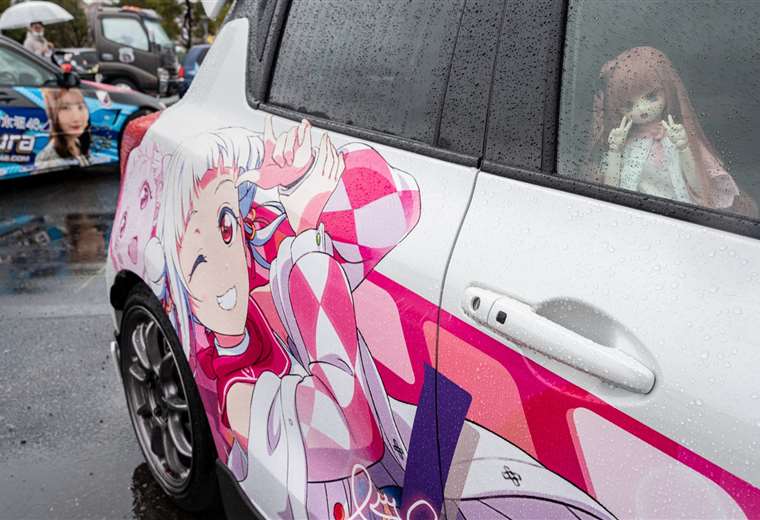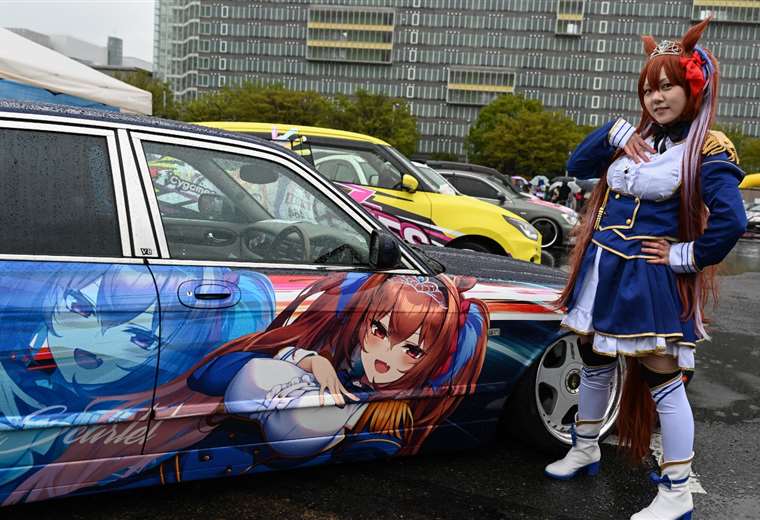April 27, 2023, 8:48 AM
April 27, 2023, 8:48 AM
Yosuke Takahata’s car is unconventional: its body is decorated with drawings of a voluptuous girl with long hair, an anime character. This practice, once considered shameful, is gaining adherents in Japan.
This 31-year-old car salesman is part of a Japanese male community that the equivalent of several thousand dollars can be spent to customize their vehicles with images from your favorite comics.
These cars, motorcycles, or caravans are called “itasha,” a word that can be roughly translated as “embarrassing car” and that reflects the poor reputation of this fashion that was born in the country in the 2000s.
But mentalities have evolved and anime, manga or video games, once considered as subcultures, now enjoy greater recognition in Japanese society.
To decorate his luxurious Jaguar XJ, Takahata opted for Daiwa Scarlet, a character from the franchise “Uma Musume Pretty Derby” in which racehorses become slender girls.
“It’s the character I like and that’s all that matterssays Takahata, who claims that if he cared about gossip, “it couldn’t lead anywhere.”
Photo: AFP
Between “cosplay” and tuning
“It’s an extension of the practice of having the image of a character on your phone”according to Shota Sato, another 26-year-old car salesman, also fond of this practice.
“Itasha Tengoku”the great annual meeting of this genre in Tokyo, brings together up to a thousand vehicles decorated in this style, halfway between “cosplay” (dressing up as characters from anime culture) and tuning.
Many owners of exposed vehicles took the coquetry beyond the body, with the wheels, the engines and the interior also decorated with the anime style.
The organizer of the event, Kenichi Kawahara, who publishes a magazine dedicated to this phenomenon, explains that this culture developed naturally among young men, “in more than 99%”, passionate about cars and anime.
But this passion does not come for free: you have to count on up to a million yen (about 7,500 dollars) for a complete “itasha” decoration.
Some save a little by hooking up the vinyl themselves, but most entrust the task to a specialist shop.

Photo: AFP
Up to ten working days
Naoya Imai runs one of these businesses in Tokyo, and many of her customers are “itasha” owners. He creates the design in agreement with the ownerprints it on adhesive vinyl and applies it to the vehicle.
Aligning the letters and other details make this a painstaking process that can take up to ten days. According to Imai, hooking the character to the body is not enough, it takes a certain sense of design to create the perfect environment.
The greater recognition of this culture means that today more and more owners “want to stand out” even more and try to get even complete strangers to admire their vehicles, says Imai.
Seeing the final product can be emotional for owners like 29-year-old Ryosuke Nakano, who trusted your Nissan Skyline to the Imai shop for a complete body decoration.
He had already attached more discreet “itasha” stickers to the rear of the car, but nothing comparable to the work of Imai who placed huge characters from the animated series “Lycoris Recoil” on the nose and sides.
“I’m a bit afraid of people’s reaction when they see this,” Nakano admits to AFP. “But I don’t care. It’s what I like.”
















